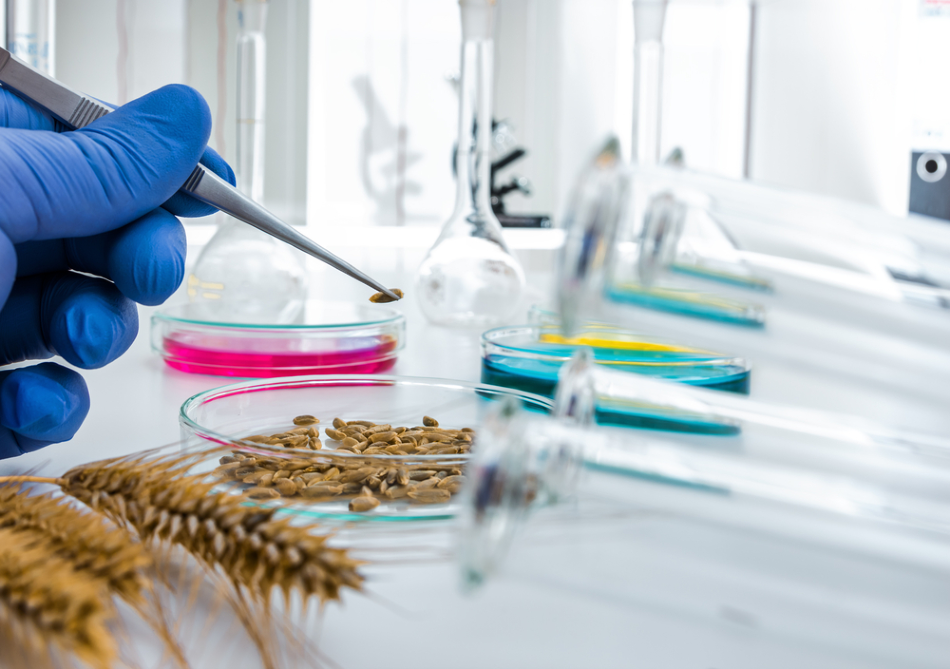Article updated on 14 December 2020.

Image Credit: Alex_Traksel/Shutterstock.com
There is a growing importance of food analysis techniques. As public concern rises and the attention given to proper food safety evaluation increases, companies in the food industry are seeking rapid, robust and reliable testing methods.
Over the past few years, the method of infrared spectroscopy for food analysis has developed greatly. Infrared Spectroscopy can be used to conduct a quality analysis on various families of food groups such as meat, fish, fruit, vegetables, dairy, eggs and cereals.
The technique works by placing a food sample in the pathway of an infrared beam. Absorption of different infrared frequencies is then measured, and these absorptions indicate the composition of the food product. In essence, it creates a “fingerprint” characteristic of the chemical and/or biochemical substances within a food sample.
Benefits of Using Infrared Spectroscopy
As the technique of infrared spectroscopy has grown and evolved in its application in food analysis, it has subsequently become a reliable and robust tool. The method has numerous benefits that make it the appropriate analytical tool for many food groups and food companies.
One main benefit is that the tool is nondestructive, which means the food item can be evaluated without destroying the sample. Further to this, the tool is convenient, relatively low cost and rapid. All these factors make it highly desirable to food companies wanting to analyze their products. Being cost-effective, convenient and quick make it easy to fit into a company’s budget, and means it does not require a significant allocation of resources such as staff time to operate.
In addition, the method is easy to carry out, which means extensive training is not required and minimal sample preparation is required to gain reliable results. Overall, the system offers a method that is light on its demands of time, cost and labor.
The method has made significant developments in recent years, making it suitable for use in testing a variety of food products, including meat, fish products, edible oils, milk and dairy products, grain products, fruits and vegetables, and others. A final benefit is that advancements continue to be developed in these specific areas, making infrared spectroscopy for food quality analysis increasingly reliable and appropriate.
Impact of Infrared Spectroscopy in Specific Industries
Dairy
There is currently a lot of research focused on developing the applications of infrared spectroscopy within the dairy industry. This means that those implementing the system are benefiting from using cutting-edge technology in the field. Researchers are dedicated to developing the technique for quantification of concentrations and quality parameters, as well as for testing of purity, identity, and adulteration.
Companies in the dairy industry are driven to optimize their processes so that products are of a high quality and are consistently safe. This drive is helping infrared spectroscopy continue to evolve to be more efficient, accurate and convenient.
Cereal Grains
Infrared spectroscopy is being used to reliably predict aspects that impact cereal grains such as protein content, sprout damage, α-amylase activity and even fungal infection. The technique is beneficial to companies in this area as it can rapidly classify grains, identifying their geographical origin, kernel hardness, and other factors.
Edible Oils
The analysis of edible oils has become increasingly important, as consumers add them into their diets for health benefits, as well as using them for their supposed functional benefits such as for the hair and teeth. Infrared spectroscopy has been proven to be the ideal technique for the quantitative analysis of edible oils, which can be difficult to evaluate.
Summary
Infrared spectroscopy has been shown to be beneficial over alternative food analysis methods due to its advantages of being low-cost, convenient, and rapid. In addition, it is a non-destructive technique that is easy to carry out, with little demands on time, cost and labor. It can reliably analyze food products, as well as eliminate food safety concerns.
References and Further Reading
Disclaimer: The views expressed here are those of the author expressed in their private capacity and do not necessarily represent the views of AZoM.com Limited T/A AZoNetwork the owner and operator of this website. This disclaimer forms part of the Terms and conditions of use of this website.